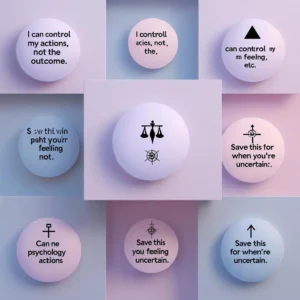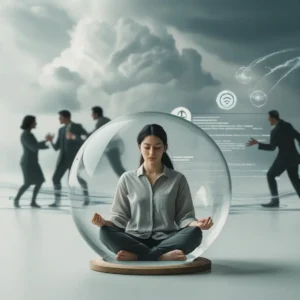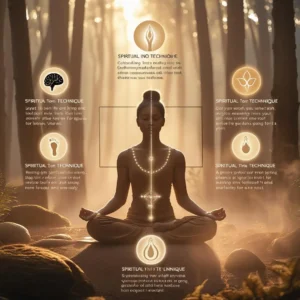Blog
Cognitive psychology
Human
Human Behavior
Lifestyle
Personal Growth
Wellbeing
climbing challenges, dawn of change, Emotional Balance, emotional resilience, goldilocks rule motivation, hopeful journey, inner strength, inspiring visuals, light after struggle, mental health art, mental wellness, mindful productivity, overcoming burnout, progress not perfection, psychology of hope, quiet triumph, resilience art, sustainable goals, transformative growth
Dona T
0 Comments
The Goldilocks Principle: Balancing Challenge and Skill for Sustained Motivation
We’ve all been there: You start a new project, hobby, or fitness routine with fiery enthusiasm, only to watch your motivation fizzle weeks later. The problem isn’t a lack of willpower—it’s often a mismatch between the challenge and your current abilities. Too easy, and boredom creeps in. Too hard, and frustration takes over. The key to staying motivated lies in finding the “just right” sweet spot, a concept psychologists call the Goldilocks Principle.
What Is the Goldilocks Principle?
Inspired by the classic fairy tale, the Goldilocks Principle states that humans are most motivated when tasks align with their current skill level, not too easy, not too hard, but just challenging enough to push boundaries without causing overwhelm. This balance triggers a state of flow, a term coined by psychologist Mihaly Csikszentmihalyi to describe the immersive focus we experience when fully engaged in an activity.
Consider video games: Developers intentionally design levels to gradually increase difficulty. If the first level of a game felt impossible, players would quit. If it stayed simple, they’d lose interest. By calibrating challenges to the player’s growing skills, games keep users hooked. The same principle applies to real-life goals.
The Neuroscience of “Just Right”
Our brains thrive on achievable challenges. When we tackle tasks in the Goldilocks zone, dopamine—a neurotransmitter linked to reward and motivation, floods the brain with each small win. This creates a feedback loop: Progress fuels motivation, which drives further effort. However, tasks that feel insurmountable trigger cortisol (the stress hormone), leading to anxiety and burnout.
A 2021 study in Nature Human Behaviour found that participants who received tasks matching their skill level showed heightened activity in the prefrontal cortex, the brain region associated with focus and problem-solving. In contrast, overly difficult tasks activated the amygdala, the brain’s fear center.
How to Apply the Goldilocks Principle
1. Break Goals into “Mini-Challenges”
Large goals (e.g., “Write a book”) can feel overwhelming. Instead, chunk them into smaller, skill-appropriate steps. For example:
- Week 1: Outline the first chapter.
- Week 2: Write 500 words daily.
- Week 3: Edit the first draft.
Each micro-goal should feel slightly challenging but achievable.
2. Track Progress Relentlessly
Visual feedback is critical for motivation. Use tools like habit trackers, journals, or apps to monitor milestones. For instance, language learners might track new vocabulary words weekly, while runners could log incremental speed gains. These “small wins” reinforce dopamine-driven motivation.
3. Adjust Difficulty Dynamically
Reassess your goals regularly. If a task becomes tedious, ramp up the challenge. If it feels overwhelming, scale back. A 2022 study in Journal of Applied Psychology found that employees who adjusted workloads based on their capacity reported 34% higher job satisfaction and lower burnout rates.
4. Embrace Strategic Breaks
Burnout isn’t a sign of weakness—it’s a biological response to chronic stress. Just as athletes rest between workouts, mental tasks require recovery. LinkedIn executive Dan Shapero famously paused his sales career to learn product management, a detour that ultimately accelerated his growth.
Real-World Examples
- James Clear’s “Atomic Habits”: Clear advocates for the “2-Minute Rule,” where habits start so easy they’re impossible to skip (e.g., “Read one page”). This taps into the Goldilocks zone by reducing friction.
- Olympic Athletes: Swimmer Michael Phelps trained with incremental challenges, adding milliseconds to lap times to stay engaged without injury.
- Language Apps: Platforms like Duolingo use algorithms to adjust question difficulty based on user performance, maintaining the “just right” balance.
The Takeaway: Motivation Is a Balancing Act
Long-term motivation isn’t about gritting your teeth through hardship. It’s about designing challenges that align with your evolving skills. By leveraging the Goldilocks Principle, you can transform monotonous tasks into engaging growth opportunities. Remember: Progress isn’t linear. Some days will feel effortless; others will require recalibration. The goal is to stay in the zone where challenge and skill dance in harmony.
FAQs
1. How do I know if a task is in my Goldilocks zone?
A task should feel stimulating but not paralyzing. If you’re bored, add complexity. If anxious, simplify.
2. Can the Goldilocks Principle help with procrastination?
Yes! Procrastination often stems from tasks feeling too daunting. Break them into smaller, manageable steps.
3. How long does it take to build a habit using this method?
Research varies, but starting with “easy wins” (e.g., 5 minutes of meditation daily) can create momentum within 2–4 weeks.
4. What if I’m stuck in a comfort zone?
Introduce micro-challenges. For example, if you’re comfortable running 3 miles, add intervals or aim for a 5K race.
References
- Csikszentmihalyi, M. (1990). Flow: The Psychology of Optimal Experience.
- Clear, J. (2018). Atomic Habits: An Easy & Proven Way to Build Good Habits & Break Bad Ones.
- “Neural Correlates of Flow States,” Nature Human Behaviour (2021).
- “Dynamic Goal Adjustment and Workplace Satisfaction,” Journal of Applied Psychology (2022).
Stay curious, stay balanced. Follow Psycsci.com for more science-backed strategies to thrive.















Post Comment